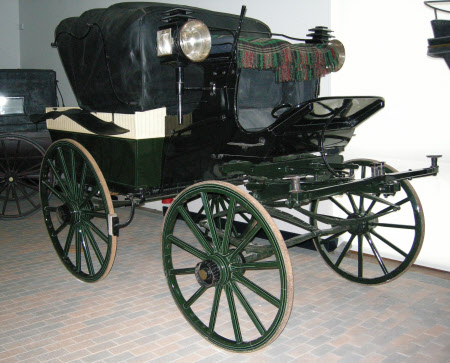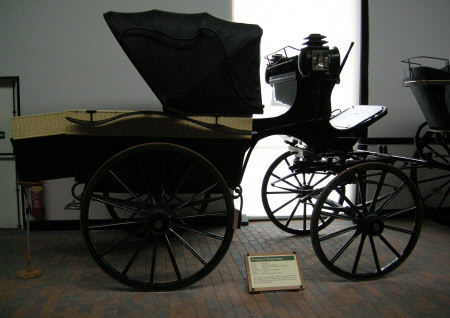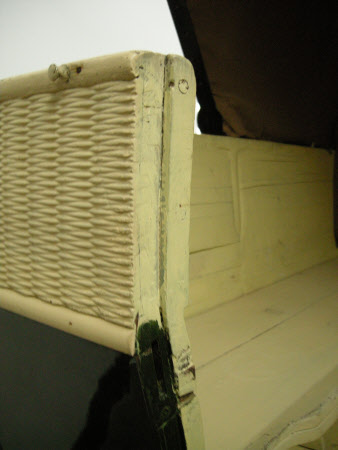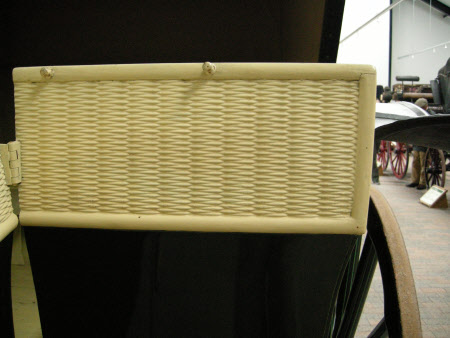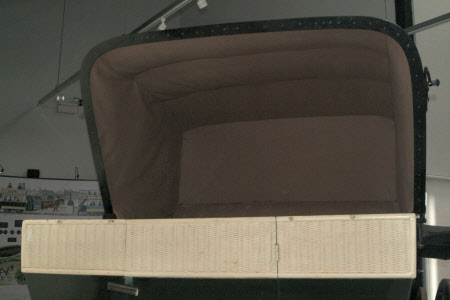Portland wagonette
Silk and Co.
Category
Carriages & other vehicles
Date
1850 - 1900
Materials
Painted wood and sham basketwork body with a leather hood, wool cloth upholstery and four iron shod wheels.
Measurements
243 x 333.5 x 203.5cm (7ft 11 2/3in x 10ft 11in x 6ft 8 1/8in)
Place of origin
London
Order this imageCollection
National Trust Carriage Museum
NT 272885.1
Caption
In 1893 the 6th Duke of Portland designed a method of fitting a single leather head to a wagonette that could be folded down thus providing more protection than in an open wagonette to which he gave his name. In some ways it was a versatile carriage, especially as the seats could be removed enabling a lot of luggage to be carried when required, making it very useful for station and estate work; it did not prove popular and it is possible that this vehicle built for the Wiston Estate near Brighton is the only surviving example.
Summary
Portland Wagonette built by Silk and Co. London circa 1900 [date also given as circa 1850]. Portland Wagonette (four wheels) for a pair of horses. This carriage has a leather hood and imitation canework on body. It is sprung on full front elliptic and rear leaf springs and has a centre pole. The wheels are iron shod, there are two candle lamps. The interior is of beige buttoned trim and has two blue buttoned cushions on the box seat. Painted in dark green livery, with light green and black lining.
Full description
The first Portland wagonette was built to the specification of the Duke of Portland in 1893. He wanted a carriage that provided more protection than an ordinary open wagonette. Its defining characteristic is the folding head, in this case on two pairs of curved joints that lower forwards and stows on the boot back. This vehicle was built by Silk & Sons, London, for the Wiston Estate at Steyning, near Brighton. Two or four horses would be driven to it, and wagonettes were one of the few carriage types that were suitable to be driven by either the owner or his professional coachman. The prototype of this vehicle was designed in 1893 by the Duke of Portland who wanted a large carriage to drive to hunt meets, which provided more protection than an open wagonette. He devised a method of fitting a leather head (carriage terminology for hood), which folds down forward. The seats, that are not now fitted, could be removed enabling a lot of luggage to be carried when required, making it very useful for station and estate work. With the seats fitted it could carry six passengers in the body, and the driver and one more on the box seat. Since the head provided very limited protection compared to that of a Lonsdale Wagonette, and it also looks much less attractive, it is not surprising that this style did not become fashionable, and this example is probably the only survivor.
Marks and inscriptions
On front nearside axle cap. : SILK & SONS LONDON 607 On front offside axle cap.: SILK & SONS LONDON 607 On rear nearside axle cap.: SILK & SONS LONDON 607 On rear offside axle cap.: SILK & SONS LONDON 607 On front nearside axle components.: B240 On front offside axle components.: B240 On rear nearside axle components.: B240 On rear offside axle components.: B240 On front axle.: LAWSON & HOLDEN LONDON On rear axle.: LAWSON & HOLDEN LONDON
Makers and roles
Silk and Co., coach builder
